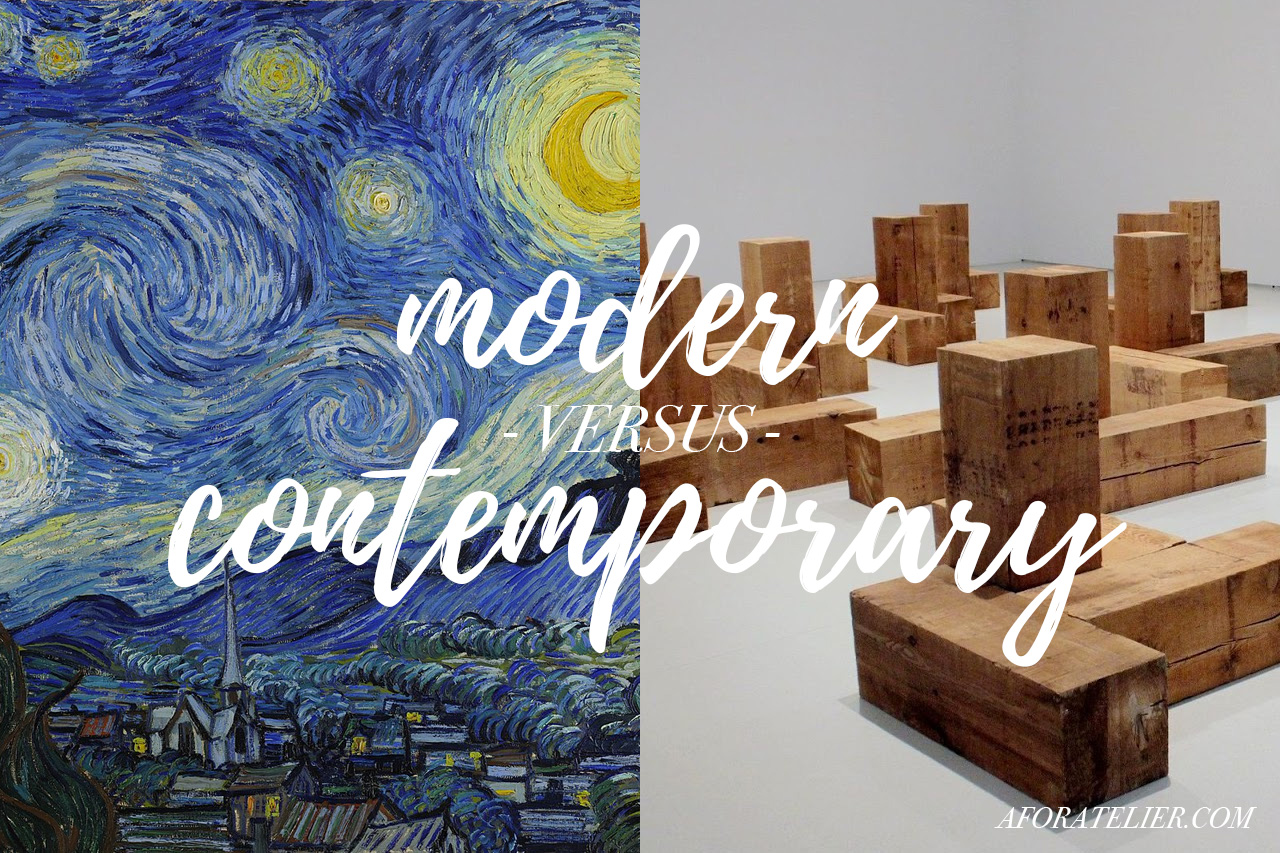Let’s get the facts straight. Modern art doesn’t refer to art created in the 20th or 21st century; it turns out that modern art isn’t as synonymous to contemporary as we thought.
Modern art actually refers to art created between the 1860s and 1960s encompassing a slew of art movements and ideas that influence many of the styles we see today. Like most art movements we can examine through the years, the artists of the modern art movement rejected traditional, historical, and academic conventions of past styles. While there is some debate as to when exactly modern art came to be, there is a general consensus that Impressionists artists such as Monet and Sisley were on a mission to represent the world they saw in a more naturalistic way. These artists went against the norms of art at the time which frequently showcased dramatic visualizations with historical or religious context.

Although Impressionist works such as Water Lilies by Claude Monet in addition to influences from the Romantics and Realists mark the beginning of the modernist movement, the true height of the modernist movement comes with Post-Impressionist and Symbolist artists. Let’s review what we know so far: (1) modern is not so modern, (2) modern art actually encompasses a variety of styles.
Art styles encompassed by the Modern art era:
- Impressionism
- Post-Impressionism
- Pointillism
- Realism
- Dada
- Symbolism
- Abstract
- Expressionism
- Surrealism
Ok, so modern art doesn’t refer to what we thought it did. What the heck is contemporary art?
Contemporary art is what we’re actually referring to most times we say “modern art”. That metal cube you saw sitting in the middle of the gallery as you thought to yourself I could do that? Contemporary art. Unlike historical art movements, contemporary art lacks a central focus in terms of material, form, and subject matter. In fact, contemporary art is defined by its lack of an organizing ideology or principle. This mirrors the state of our own contemporary society and our multitude of perspectives and opinions on topics like globalization, politics, technology, and culture among others in a way.

While yes, contemporary art encompasses that oh-so confusing minimalist metal cube you saw, contemporary art also often comes with an important narrative beyond the art piece itself. Take Warhol’s great Pop Art works for example, this art style makes a blatant statement on pop culture through the use of materials and imagery coming directly from items embedded in the culture itself. Pop Art borrows imagery from mass culture such as advertisement and comic books, taking these designs out of context to create a dialogue around and emphasize these banal, everyday elements of culture; commonly featuring an underlying theme of irony.
“They always say time changes things, but you actually have to change them yourself”.
-Andy Warhol
As we explore more art topics with our Art 101 series, you’ll start to notice a pattern; artists are the original hipsters. Contemporary art much like modern art is a rejection of the ideologies and art culture of its predecessors; Modernism is to Contemporary Art what Romanticism was to Modern Art.
The styles encompassed by Contemporary art include:
- Abstract expressionism
- Computer art
- Conceptualism
- Minimalism
- Performance Art
- Video Art
- Feminist Art
- Postmodernism
So the next time you’re standing in an art gallery and someone points to the wooden plank under the spotlights in the corner of the room and says they hate modern art, you can tell them contemporary art is to blame instead.
Just kidding. We love you Warhol.









Love the cover work! Plus the waterlilies are a personal favorite of mine; saw them in Paris this summer!
Thanks! I’m hoping I’ll get a chance to see the piece in person someday as well 🙂